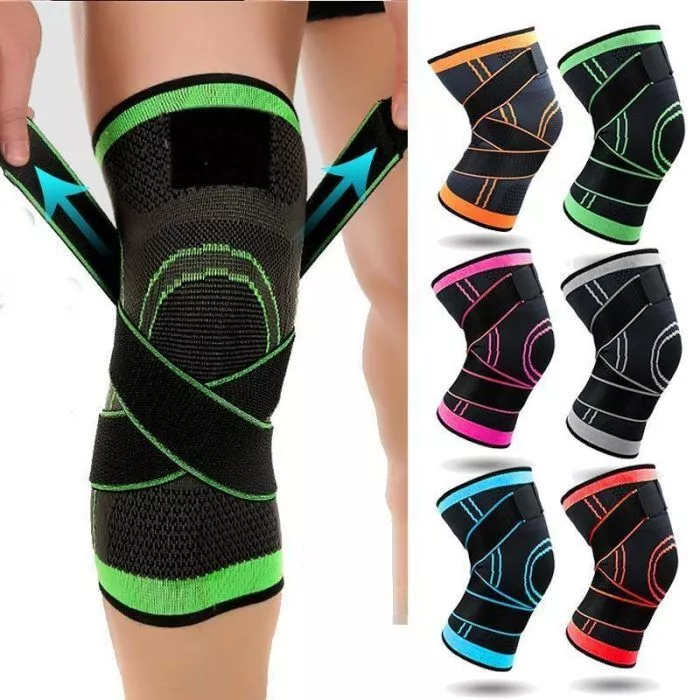Links: |
 |
Knee injuries, whether caused by sports, accidents, or wear and tear, can be painful and debilitating. The road to recovery often involves rest, physical therapy, and a good deal of patience. However, one crucial tool that can significantly expedite the healing process is knee support. In this blog, we'll explore the importance of Knee support gym in healing and recovery, how it accelerates the process, and the various types of support available to help individuals regain mobility and return to their active lives.
The Challenge of Knee Injuries
Knee injuries can occur for a variety of reasons:
Sports Injuries: Athletes are susceptible to knee injuries due to the repetitive and high-impact movements involved in many sports.
Accidents: Falls, collisions, or accidents can lead to sudden knee trauma.
Overuse: Activities that put prolonged stress on the knees, such as running or heavy lifting, can lead to overuse injuries.
Degenerative Conditions: Conditions like osteoarthritis can cause gradual damage to the knee joint, leading to pain and reduced mobility.
Regardless of the cause, knee injuries can result in pain, swelling, instability, and difficulty with daily activities.
The Importance of Knee Support in Healing and Recovery
Knee support is a fundamental aspect of healing and recovery for several reasons:
Stabilization: Knee support, in the form of braces, sleeves, or wraps, helps stabilize the injured joint, preventing further damage during the healing process.
Compression: Many knee support products provide gentle compression, which helps reduce swelling and improves blood circulation to the injured area.
Pain Relief: Knee support offers pain relief by reducing the pressure on the injured knee, making movement less painful.
Prevention of Overuse: In some cases, the knee injury may have been caused by overuse. Knee support can prevent this by discouraging excessive movement during recovery.
Enhanced Mobility: Knee support gym can help patients regain their mobility more quickly by providing external stability.
Support for Rehabilitation: Individuals undergoing physical therapy often use knee support to help perform exercises safely and effectively.
Types of Knee Support for Healing and Recovery
Several types of knee support are available to aid healing and recovery:
Knee Braces: There are various types of knee braces, including hinged, prophylactic, and rehabilitative braces. They offer different levels of support and protection based on the stage of recovery.
Compression Sleeves: These provide gentle compression to reduce swelling, improve blood flow, and reduce pain.
Knee Straps: Knee straps target specific areas of the knee, such as the patellar tendon, and are used to manage conditions like patellar tendonitis.
Knee Wraps: Often used in weightlifting and powerlifting, knee wraps provide external support, helping individuals maintain proper knee alignment during heavy lifts.
Cushioned Knee Pads: Ideal for individuals who need to kneel during their work or therapy sessions, knee pads provide cushioning to protect the knees from further trauma.
Ways Knee Support Speeds Up the Healing and Recovery Process
Knee support plays a crucial role in accelerating the healing and recovery process:
Stabilization: By stabilizing the injured knee, knee support helps prevent further damage during the critical early stages of recovery.
Compression: Compression from knee support products can help reduce swelling and inflammation, allowing the body to heal more efficiently.
Pain Relief: Reduced pressure on the injured knee leads to pain relief, making it easier for individuals to engage in rehabilitation exercises.
Enhanced Mobility: Knee support provides external stability, enabling patients to regain mobility more quickly and participate in physical therapy exercises with confidence.
Support for Rehabilitation: For individuals undergoing physical therapy, knee support aids in performing exercises safely and effectively, speeding up the recovery process.
Choosing the Right Knee Support for Healing and Recovery
Selecting the appropriate knee support is essential to ensure it effectively accelerates the healing and recovery process. Consider these factors when choosing the right knee support:
Type of Injury: Different knee injuries may require specific types of knee support. Consult with a healthcare provider to determine the most suitable support for your condition.
Fit and Comfort: Ensure that the knee support you choose fits comfortably and securely. A proper fit is essential for both the effectiveness of the support and overall comfort during recovery.
Breathability and Moisture-Wicking: Knee support options that offer breathability and moisture-wicking properties can keep the knee area dry and comfortable during the recovery process.
Level of Support: The level of support required may vary based on the stage of recovery and the nature of the injury. Consult with a healthcare provider or physical therapist to determine the appropriate level of support.
Conclusion
Knee injuries can be challenging, but with the right care and support, the healing and recovery process can be significantly accelerated. Knee support, in the form of braces, sleeves, wraps, or knee pads, plays a crucial role in providing stability, compression, pain relief, and support during rehabilitation. This enables individuals to regain mobility, reduce swelling, and improve overall comfort as they work towards a full recovery.
By prioritizing knee health and choosing the right knee support, individuals can return to their active lives more quickly, resume their favorite activities, and enjoy a life free from the constraints of knee discomfort and immobility. Knee support empowers them to heal and recover with confidence, ensuring a healthier and more active future. |

